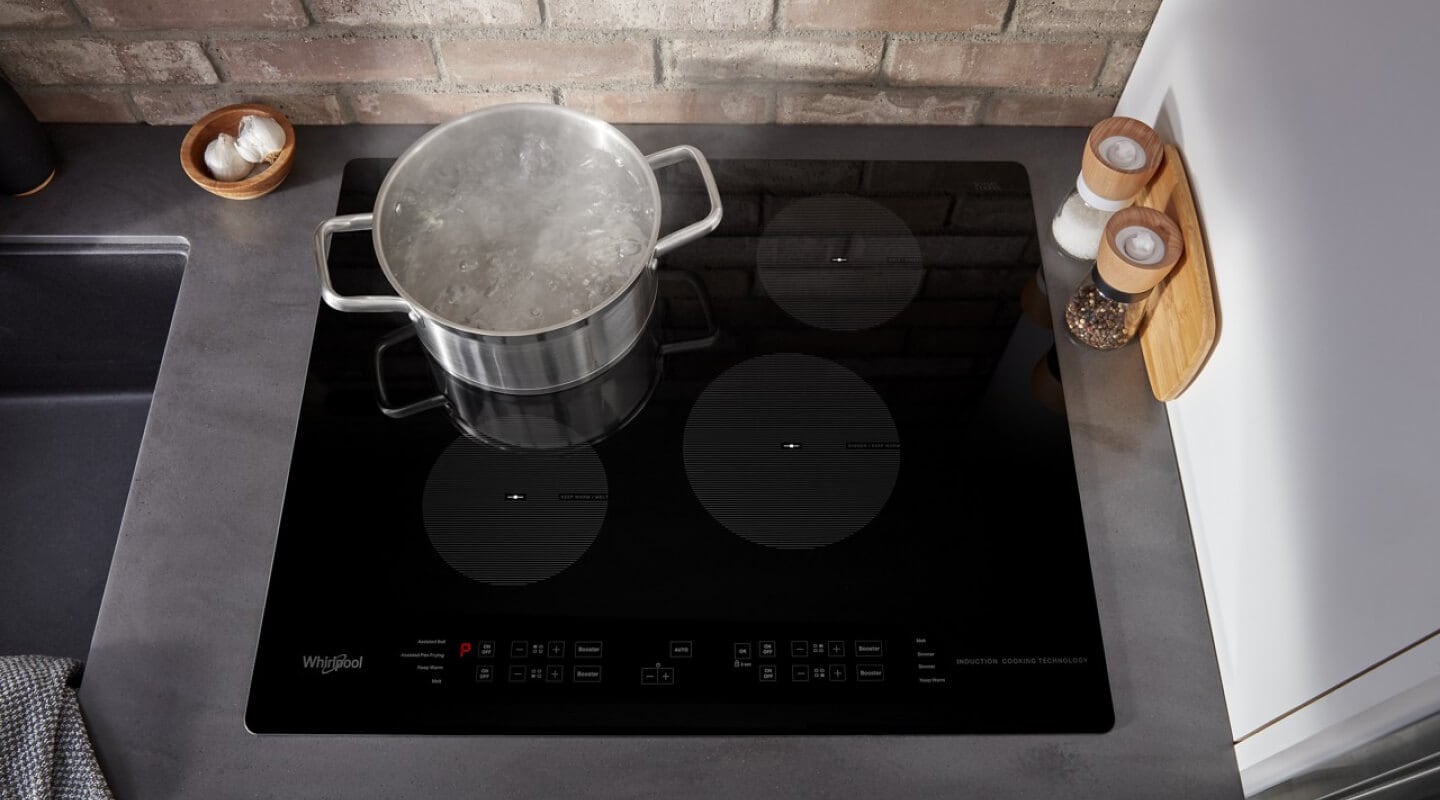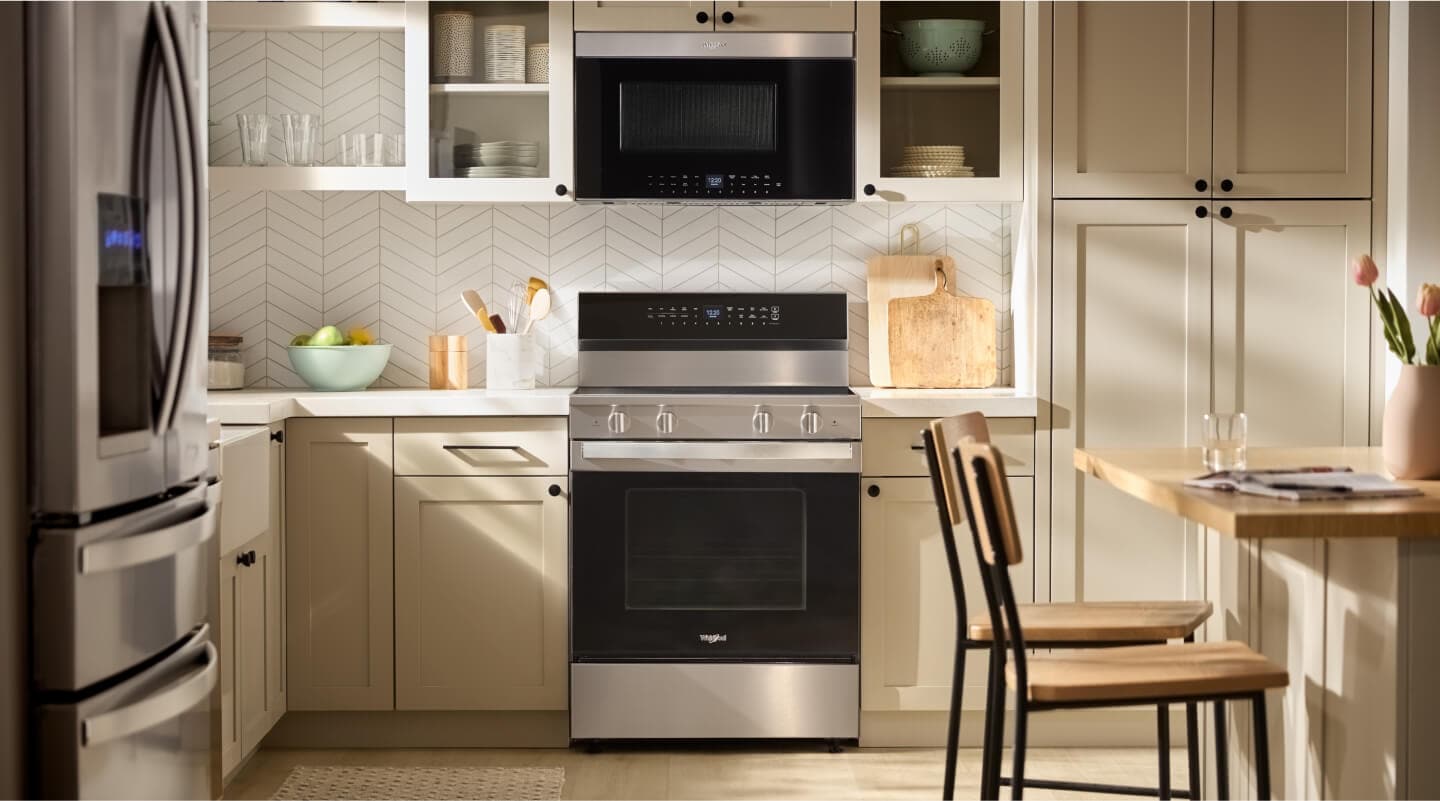
Gas vs. electric stoves: which is best?
Both gas and electric ranges have advantages, depending on what and how you cook. Gas ranges offer more responsive heat control when it comes to the burners, which is great for switching between searing meats or stir-frying veggies, while the dry heat of electric range ovens may work better for certain baked goods. Learn more about the differences between cooking with gas and cooking with electric so you can find the best range for your family.
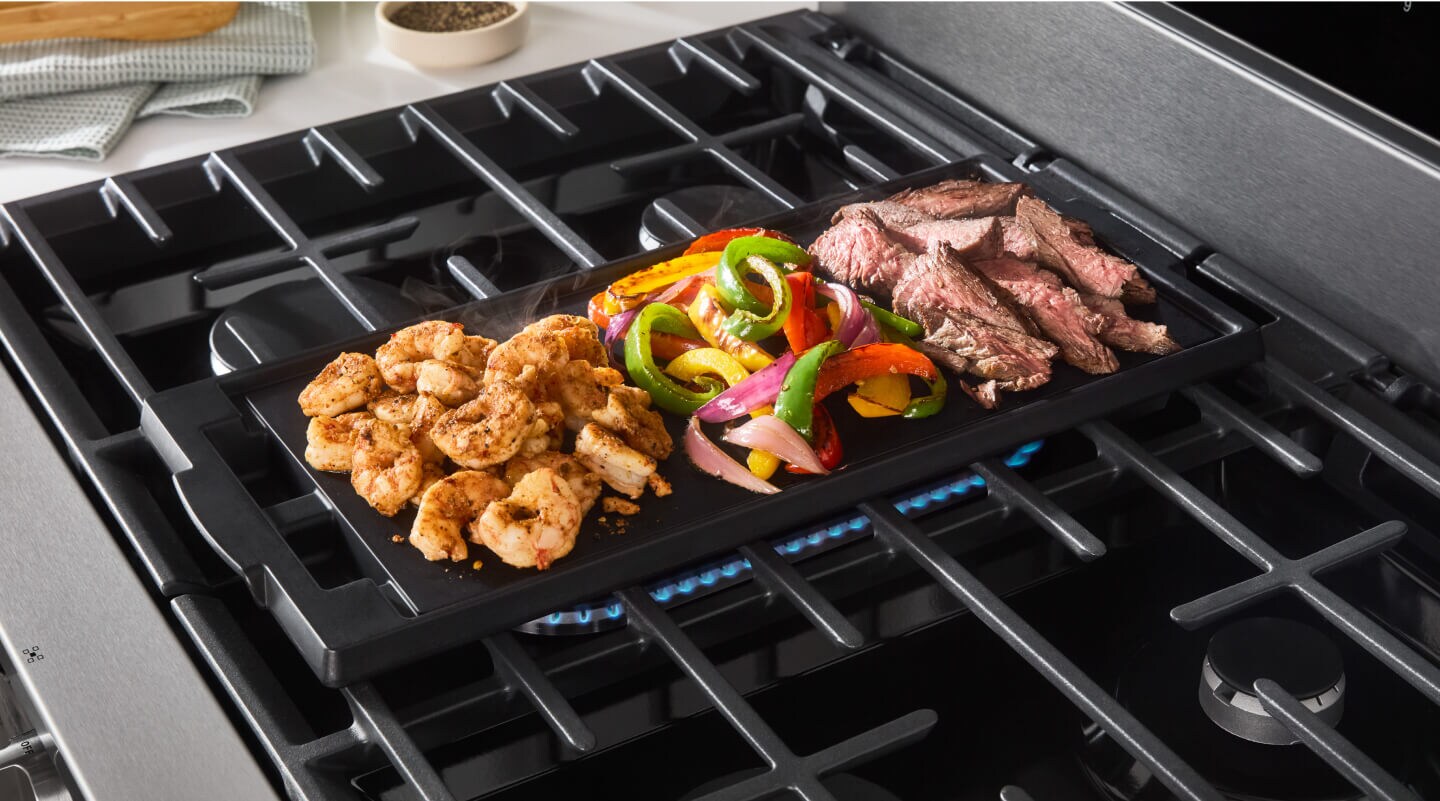
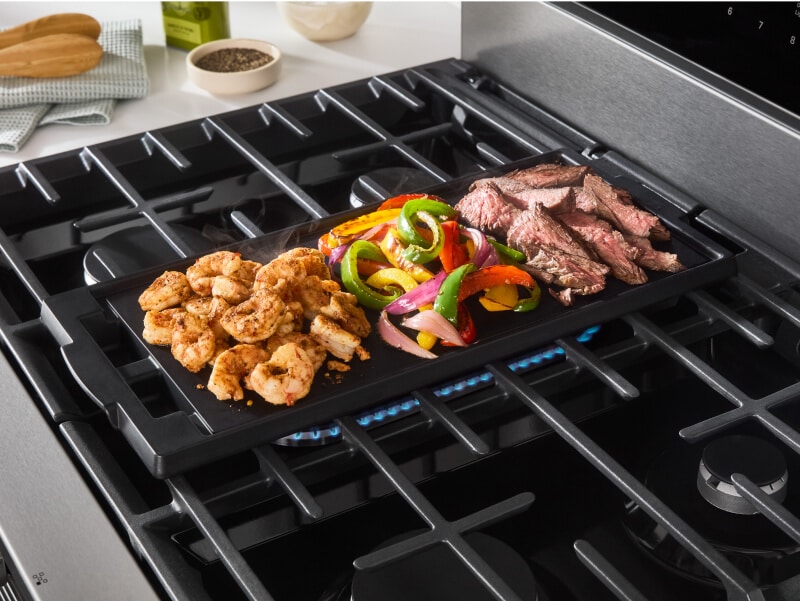
What is a gas stove?
Gas stoves use an open flame to cook food both inside the oven cavity and on the stovetop. The flame within the oven cavity flickers on and off to maintain a set temperature while those on the stovetop can be quickly adjusted to your desired flame size and corresponding heat level. Every gas stove requires a dedicated gas line that can be installed in your kitchen if it’s not already equipped.
Shop Whirlpool® Gas Ranges
Get dinner on the table quickly with Whirlpool® Gas Ranges. Unlock new cooking capabilities over time with Smart Feature Updates1, and get quick access to spills on the cooktop with industry-first EZ-2-Lift™ Hinged Cast-Iron Grates, available on select Whirlpool® Gas Ranges.
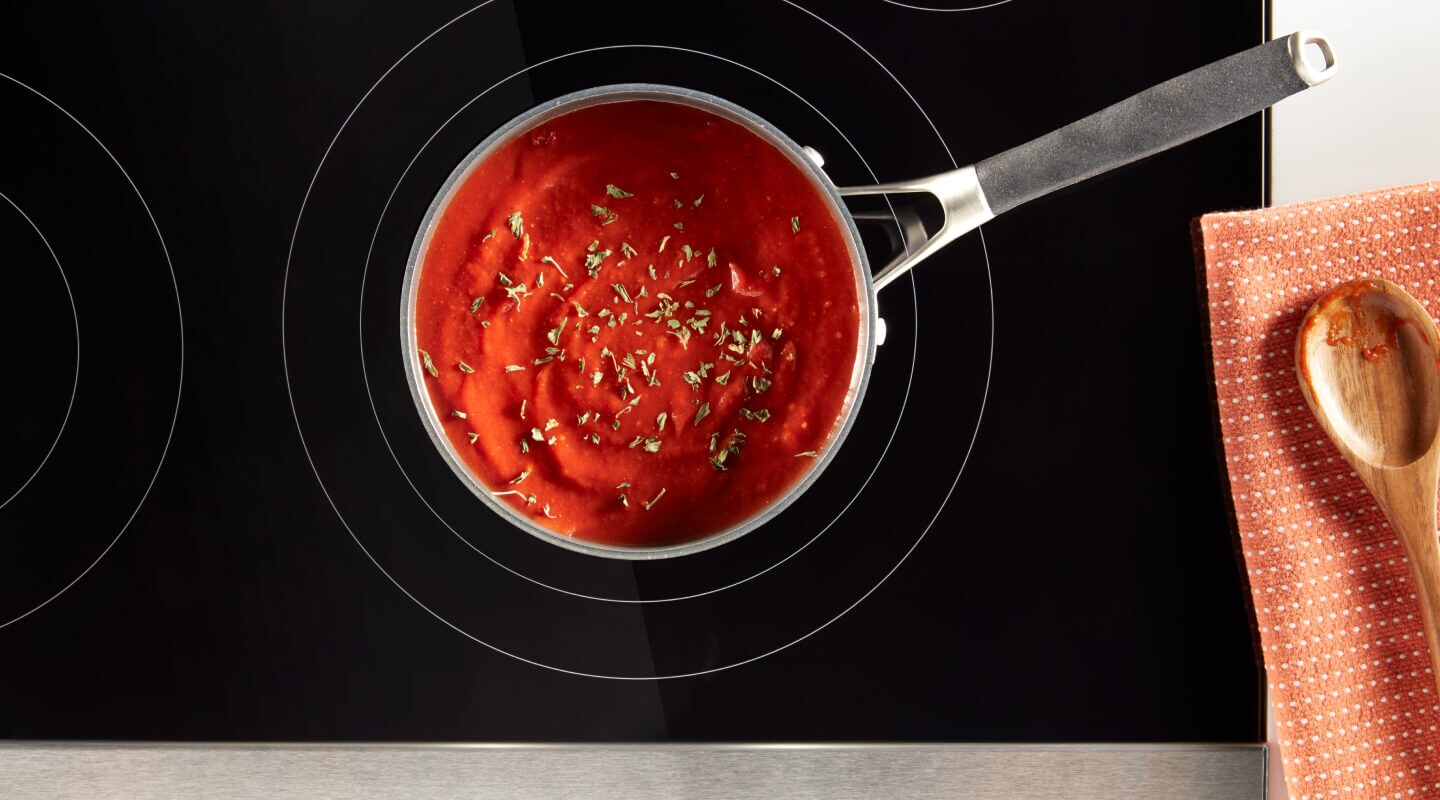
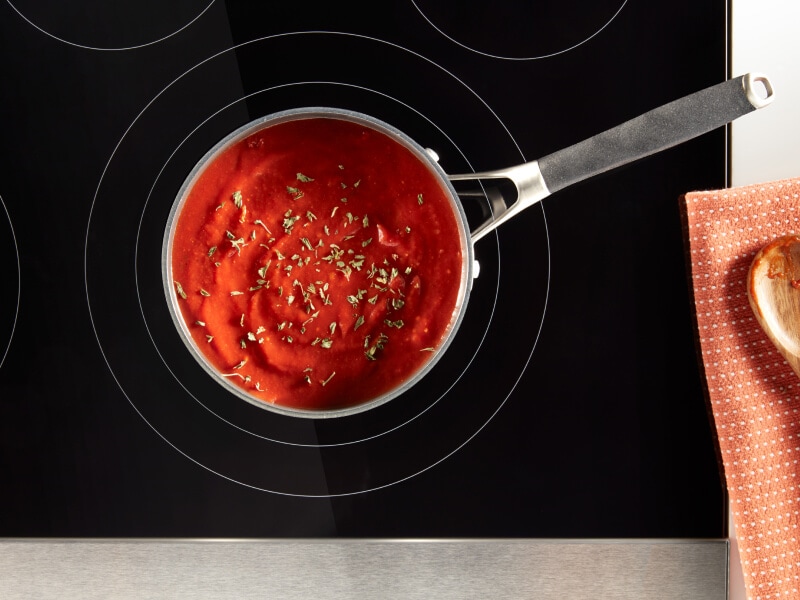
What is an electric stove?
Electric stoves rely on metal heating elements housed within the oven and on the stovetop or housed beneath a ceramic-glass surface. You can usually identify an electric stovetop by its smooth and flat surface that’s often made of a ceramic-glass blend or by exposed metal coils on top.
Heating elements are located on both the top and bottom of the oven cavity for roasting, broiling and baking. Electric stoves plug into an outlet so they’re typically simple to install, but they do require a 240-volt outlet.
Shop Whirlpool® Electric Ranges
Whirlpool® Electric Ranges offer the features and capacity you need to get dinner on the table. The Flexheat™ Dual Radiant Element on select Whirlpool® ranges offers two elements in one with a 6" inner ring that's great for smaller pots and pans and a 9" expandable outer ring that makes room for larger cookware. Select Whirlpool® Electric Ranges, like this one, allow you to skip scraping and intense scrubbing of baked-on foods with the WipeClean™ Coating, the easiest-to-clean induction cooktop coating.2
What is an induction stove?
An induction stove is a type of range that broils and bakes just like an electric oven but may have different capabilities based on the model. The induction cooktop generates an electromagnetic field below the cooking surface, heating up the magnetic cookware rather than the stovetop to heat up and cook your food.
Induction cooktops require specific cookware, such as cast iron and most stainless steel. If you’re unsure whether your cookware is compatible with induction cooktops, check to see if a magnet sticks to the bottom or if the item is labeled as induction compatible.
Shop Whirlpool® Induction Ranges
Whirlpool® Induction Ranges help generate heat directly within cookware to heat and boil quickly, keeping the cooktop surrounding the elements cool. Bring variety to mealtime with the dynamic air flow and intense heat of Air Cooking Technologies like Air Fry and Air Bake. Once mealtime is over, clean your oven without harsh chemicals in only 40 minutes with AquaLift® Self-Cleaning Technology. Add water, run the cycle and then wipe away any remaining soils once the cycle is done.
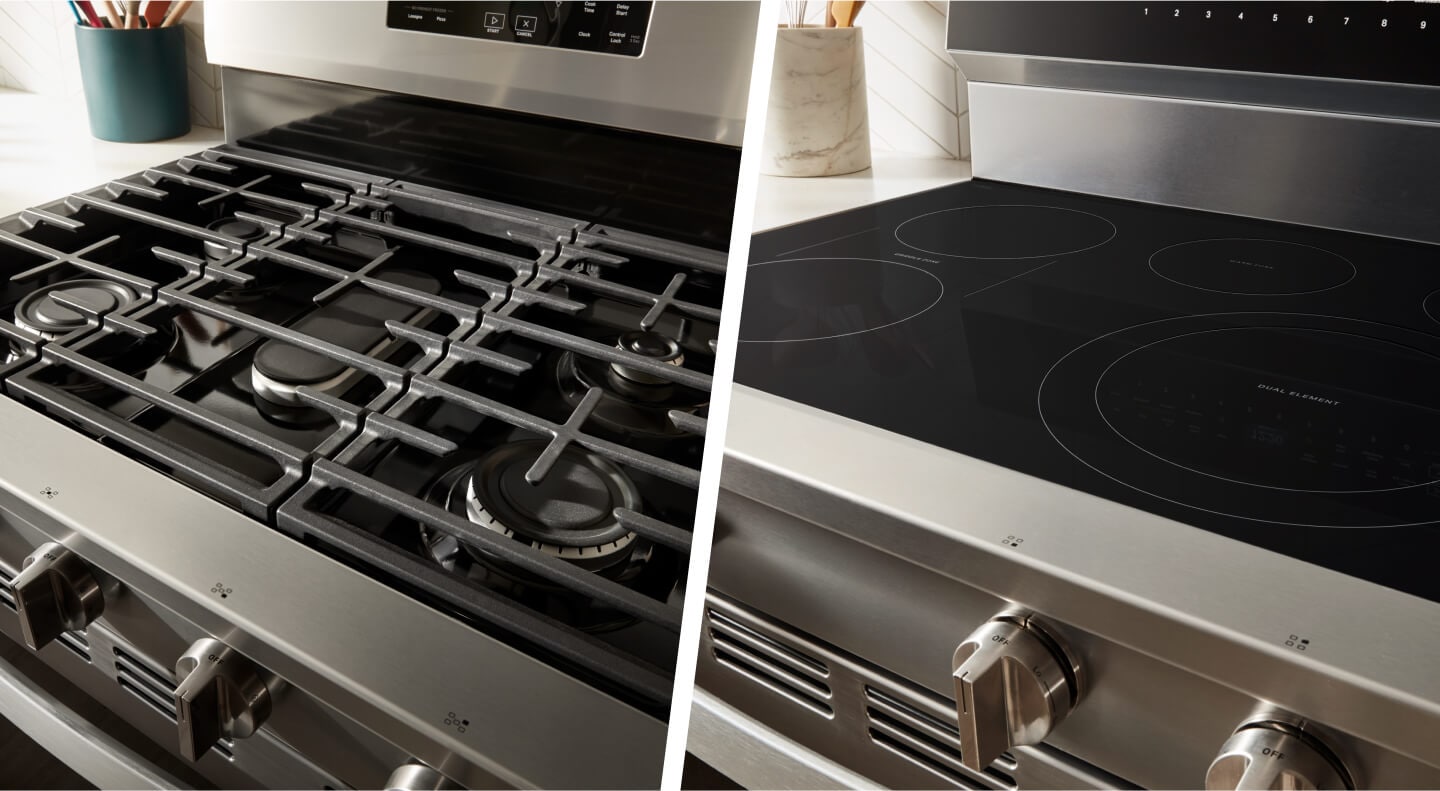
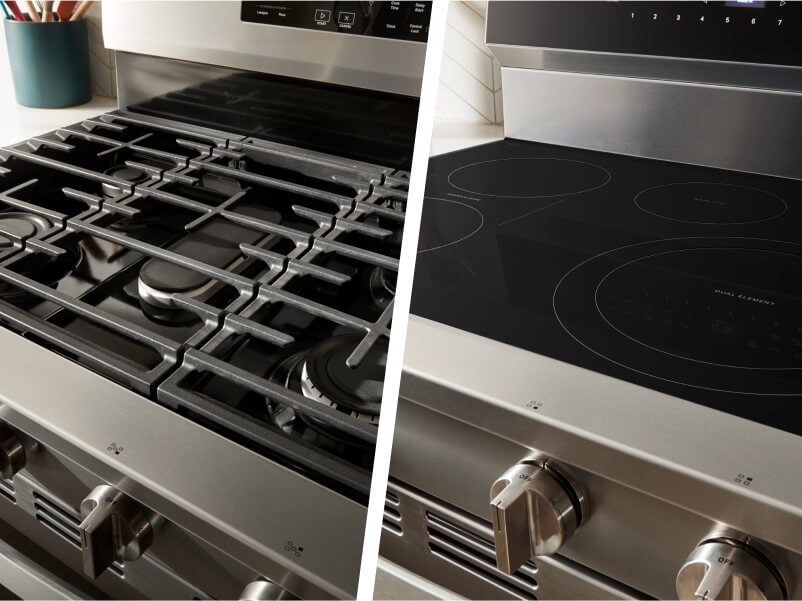
What are the differences between gas and electric stoves?
A gas range, or stove, is composed of a gas cooktop and gas oven, and an electric range has an electric cooktop and electric oven. Gas stoves allow cooks to manipulate an open flame on the stovetop for a more hands-on experience while electric stovetops are often easier to clean.
Both gas and electric stoves can help you achieve your desired results with nearly any cooking technique, but the way they get the job done varies. Read on to learn more about how gas vs. electric stoves vary by energy type, efficiency, heat control, cleaning methods and baking performance.
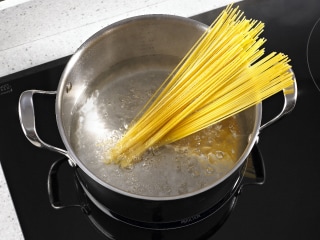
Does induction cooking work with gas or electric?
Type of energy source
Gas ranges, ovens and cooktops require a gas hookup and a power outlet. If you don’t currently have a gas hookup, you’ll need to weigh the cost of having a gas line installed to use gas appliances in your kitchen. If you do have a gas hookup (or you’re installing a gas line), determine whether your kitchen has natural gas or propane. To use propane, you’ll likely need a conversion kit.
Electric ranges plug into an electrical outlet—making them easy to install in most kitchens—but not just any outlet will do. Electric ovens require a 240-volt outlet with a dedicated circuit.
An additional type of range, called a dual fuel range, has a gas cooktop and electric oven and combines the benefits of both.
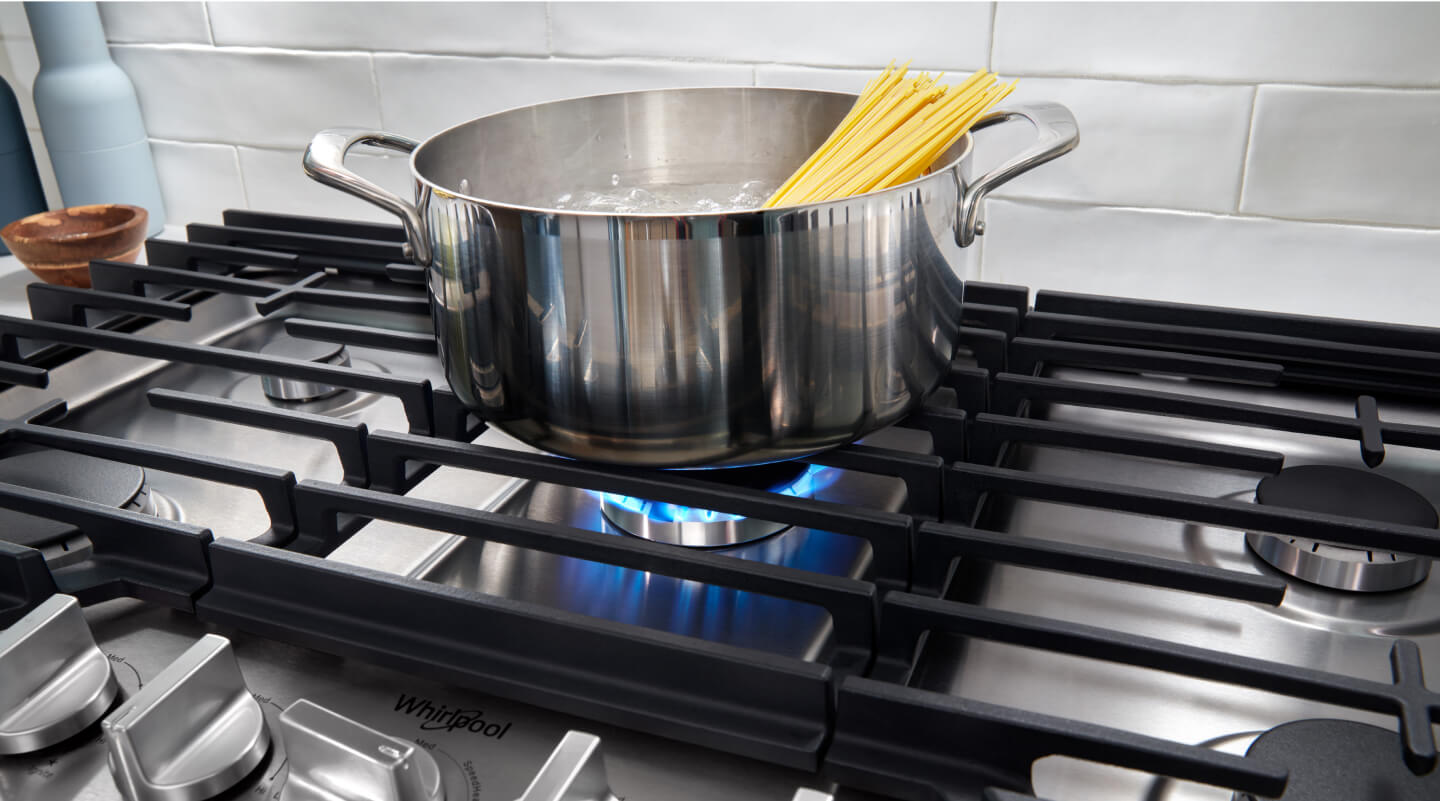
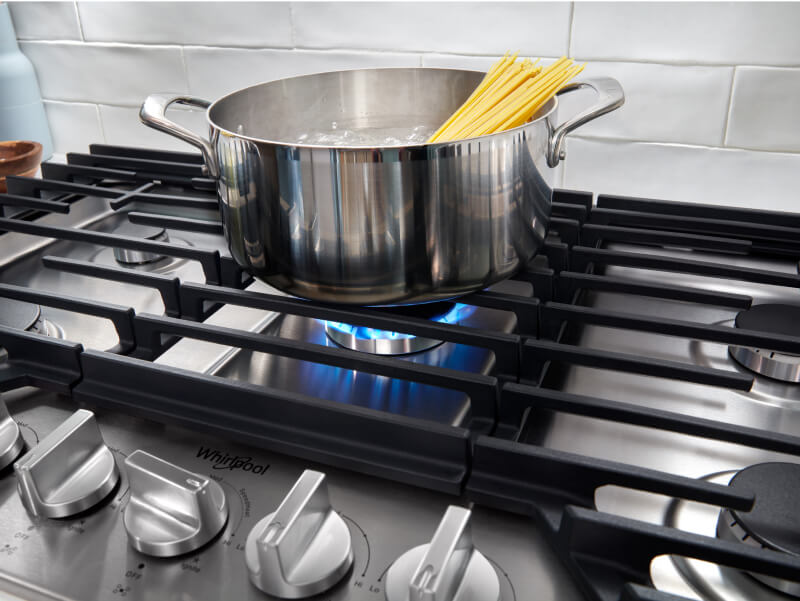
Burner heat control and power
If you like to make meals that require rapid temperature changes, gas ranges might be the way to go. The burners on a gas cooktop help give control over your flame level and even allow you to char and grill foods directly on the burner. You can quickly adjust an open flame if a dish is cooking too fast or slow, or allow the flame to reach up the side of pans, like skillets and woks, for methods that require rotating food around the sides of the pan. Some gas cooktops feature oval burners designed to handle oversized cookware, like griddles or Dutch ovens, and stovetop burners often cool relatively quickly once they’re switched off.
Electric stovetops can feature dual/triple electric elements that have multiple rings to deliver the right coverage for whatever you’re cooking with, and a bridge element that’s ideal for large or oddly shaped pots and pans. Select electric stovetops feature a smooth, flat surface that’s quick to wipe up and doesn’t require removing components like burner grates and drip pans.
Baking, roasting and broiling performance
Electric ovens utilize metal heating elements in the inside to bake, roast and broil. Radiant elements on electric cooktops are perfect for boiling and other tasks. The heat in electric ovens is usually drier and often helps provide consistent temperatures due to rapid on/off cycles of the heating elements. If you do a lot of baking or browning, you might want to consider an electric range.
Gas ovens feature an open flame that can be cranked up to preheat quickly. Both gas and electric ovens can feature convection cooking.
Shop Whirlpool® Ranges with Air Cooking Technology
Whirlpool® Ranges with Air Cooking Technology help make the most of your time in the kitchen. Get the ultimate Air Cooking Technology and bring fresh options to your family dinner with No Preheat Air Fry, Air Baking, Air Broil, Air Roast and Air Reheat.
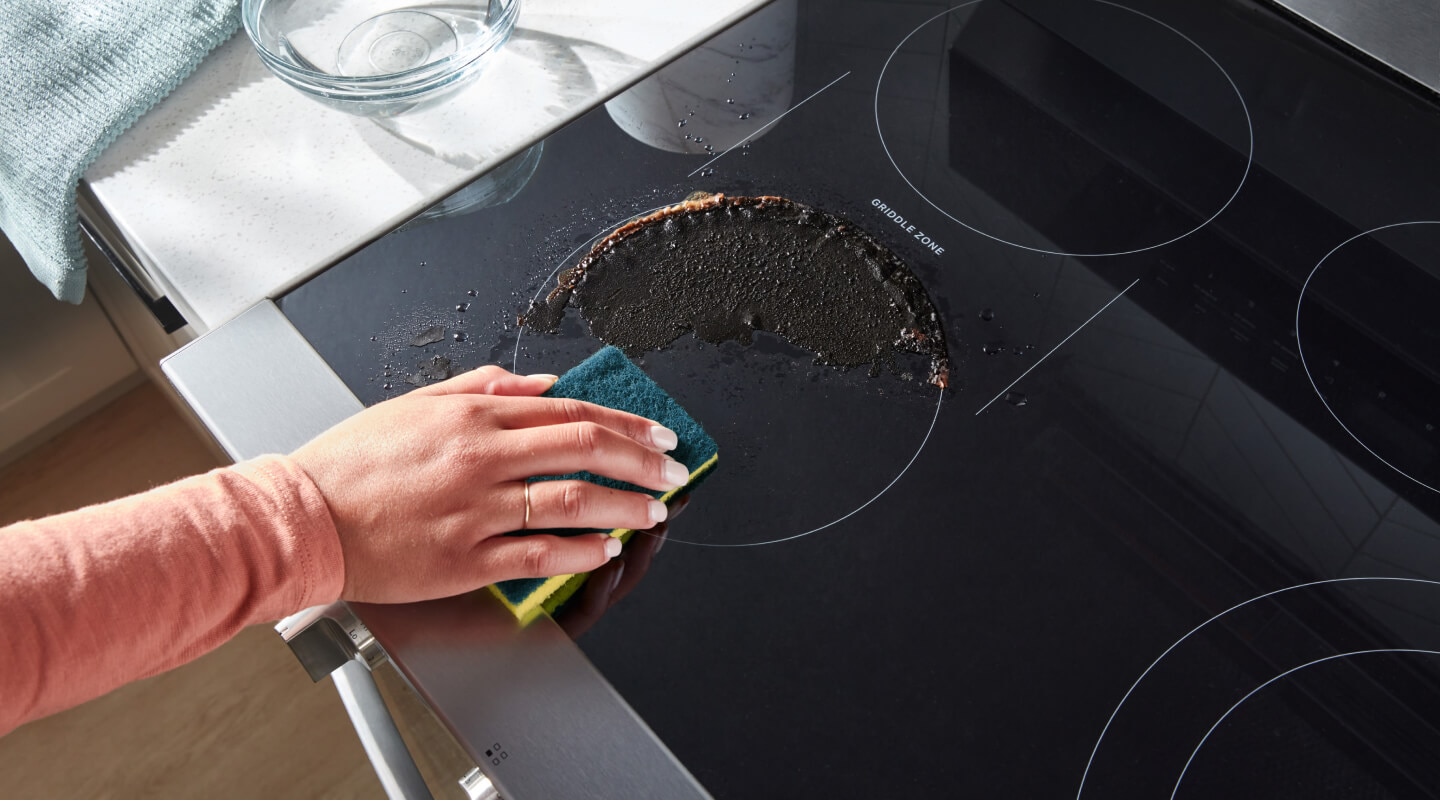
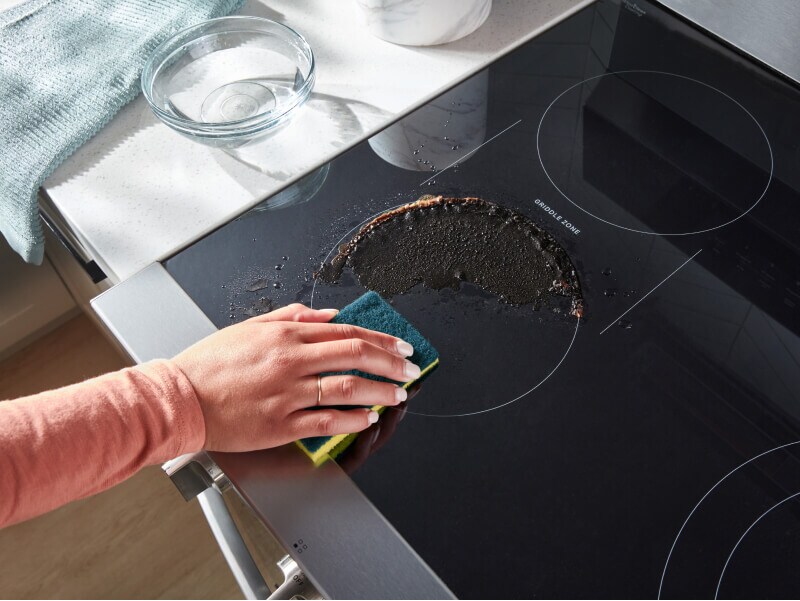
Ease of cleaning
Some electric ranges have a smooth cooktop surface that’s easy to wipe clean, while some gas ranges feature removable grates and sealed burners. Both types typically have a self-clean feature within the oven cavity that also helps you clean up spills and splatters.
While you can quickly wipe up spills, deep cleaning a gas stovetop usually requires removing grates and burner caps, soaking removed parts, wiping down burners, and replacing dried grates and caps. Though the process is straightforward, cleaning a gas stovetop requires more steps.
Stubborn splatters and spills on electric stovetops can often be gently scraped off with a cooktop scraper. Then, the stovetop can be wiped down using a nonabrasive cleaner and sponge or rag. Since there’s no need to remove parts, cleaning an electric stovetop is often faster.
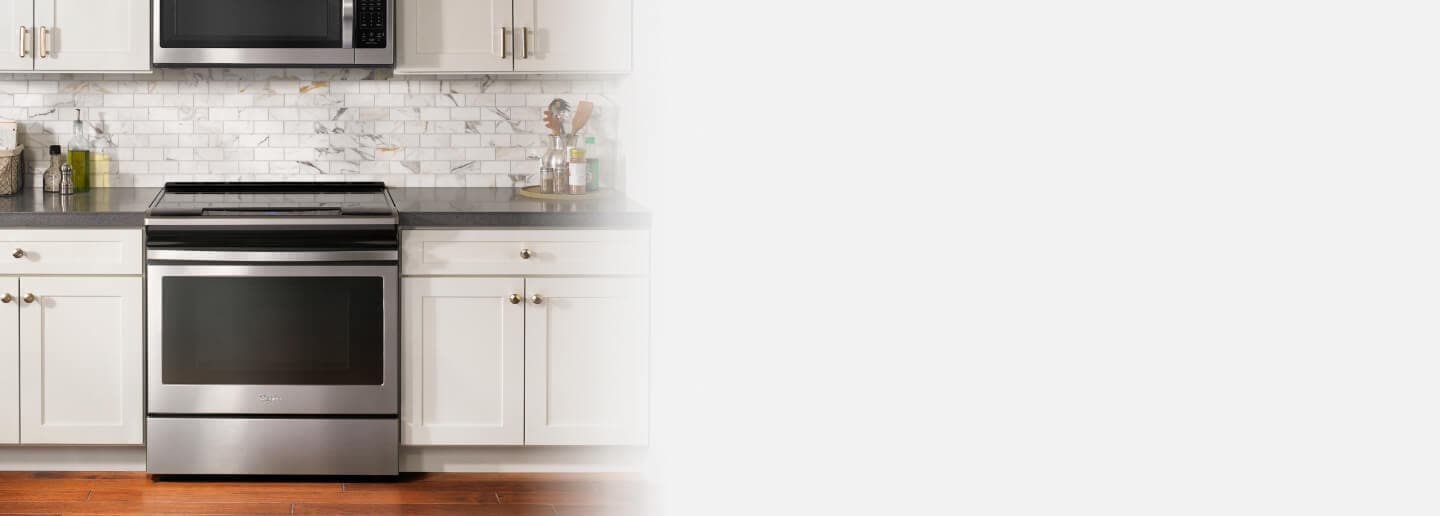
Whirlpool® Ranges
A range for every home
Find the range you need with the design and features you love when you explore ranges from Whirlpool brand
Cost and efficiency
The operating cost for your range can be heavily influenced by the utility costs in your area, but gas stoves are generally slightly cheaper to operate than their electric counterparts. However, purchasing and installing a gas stove may be more expensive than an electric stove with similar features.
Both gas and electric stovetops transfer heat from the burner to the cookware in order to boil, simmer, sauté and sear dishes. Some heat can be lost to the surrounding air when using an open flame on your gas stovetop. Because electric burners make direct contact with pots and pans, you’re more likely to retain heat within them. Induction models—a type of electric stove—use electromagnetism to generate heat within the cookware itself, and can result in little to no heat loss.
Learn more about induction cooktops and how they work.
Benefits of gas and electric stoves
Check out the additional considerations and recommendations below to help you decide between gas and electric. Once you’ve decided, you can read this guide to learn how to install a gas or electric range.
Benefits of gas stoves
Quickly adjust stovetop heat levels and flame size
Char and grill directly on a burner’s open flame
Burners cool down quickly compared to electric stoves
Heat the sides of a pan with flames
Ability to visually gauge the heat level by observing the flame
Compatible with a variety of types of cookware
- Ability to possibly still function during a power outage
Benefits of electric stoves
Typically less oven temperature fluctuation
More direct heat transfer on stovetop
Dry, even oven heat ideal for browning or broiling
Flexible element sizes for various pots and pans
Easy to clean smooth cooktops available
Available in a variety of styles, including induction and glass-top models
Shop all Whirlpool® Ranges
Whether you love to bake, broil, roast or air fry, your range’s fuel type and the different types of stoves or ranges can help you make the most of mealtime. Explore the latest features on select Whirlpool® Ranges, like the Steam Clean Option. Clean up after everyday light spills using only heat and 1-1/4 cups of water—no harsh chemicals or cleaners needed. Used periodically to clean light spills on the bottom of the oven, it keeps the oven clean and reduces the need for frequent self-clean cycles.


Helping kids stay in school
Learn how Whirlpool helps end the dropout cycle by giving kids access to clean clothes through the Care Counts™ Laundry Program
Was this article helpful? Pass it on
Explore more from Whirlpool brand


home heartbeat
Ready for more tips, home hacks and appliance guides?
1. Appliance must be connected. WiFi & App Required. Features subject to change. Details and privacy info at whirlpool.com/connect.
2. When compared with cooktops with the same heating technology with similar wattages.

